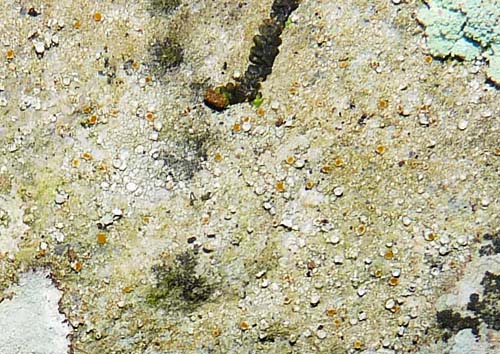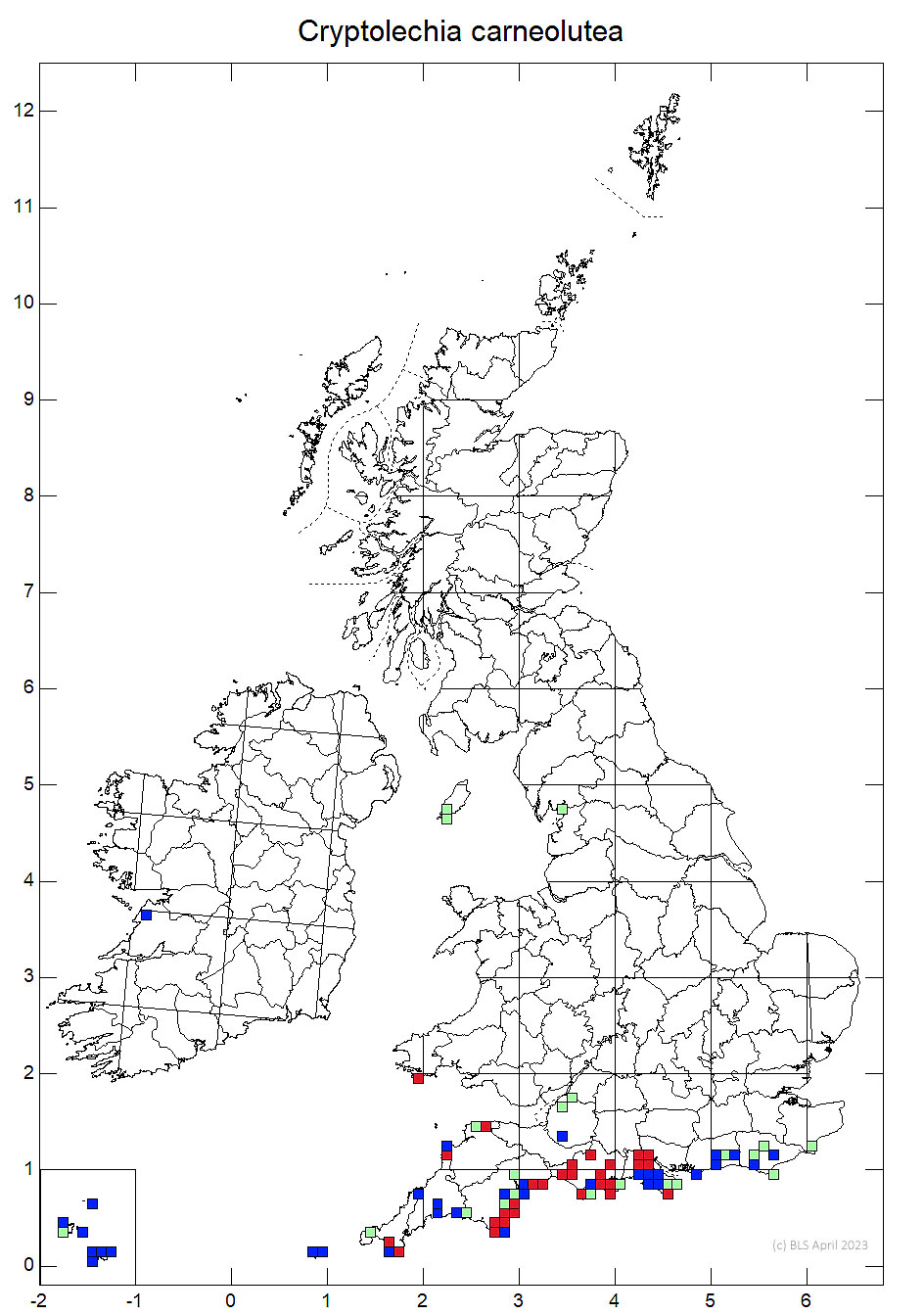This lichen is a national BAP species only recently recorded from Wales and not yet included on the Section 42 list.It forms an extensive smooth, soft matt white to mottled pale grey-green thallus that scratches orange as it contains Trentepohlia as the symbiotic alga. Commonly scattered over the thallus are pinkish to orange apothecia discs surrounded by a notched pseudothalline margin that may become excluded.
.jpg) |
 |
| Cryptolchia carnolutea on ivy stem (Photo: Ray Woods) | Cryptolchia carnolutea on limestone (Photo: Ray Woods) |
On bark the apothecia are never as sunken as Gyalecta species whilst on limestone Petractis clausa has apothecia more completely covered by the thalline margin and has a pale grey not white thallus.
It occurs on shaded basic bark of often ancient ash, elm and ivy and rarely on shaded limestone. In Wales it is only known from shaded ivy stems and shaded Carboniferous Limestone in a coastal ravine woodland.
Until its discovery in Wales almost all recent records were from sites usually close to the coast in southern England with outliers on the Isle of Man, Silverdale in Lancashire and Co. Clare in Ireland.
Recorded on four shaded limestone outcrops in the Merepool Valley within Stackpole NNR on land owned by the National Trust in Pembrokeshire where it was first noted by Bryan Edwards in November 2007. He considered it to be one of the largest populations in Britain. One population was rediscovered in August 2011 by Ray Woods and Tim Wilkins of Plantlife at SR9704393952.
The Woods and Wilkins site (see above for details and grid ref) was only found after considerable searching. Despite being a sunny evening the dense canopy and thick ivy covering rocks made the location of rock outcrops difficult. Only one was found that was not so entirely covered in ivy as to preclude lichen growth. The Cryptolechia could only be located on rock with difficulty and employing an illuminated hand lens. It is recommended all future surveys are carried out in winter when the woodland canopy casts less shade. It was found associated with the black leafy liverwort Marchesinia mackaii and the lichens Acrocordia gemmata, Lepraria sp. and an unidentified pyrenocarp. Apothecia were sparse and poorly developed. Better developed and more abundantly fertile colonies were found on 1cm diam ivy stems appressed to the rock.
Whilst demanding shade and occuring on ivy stems, the lack of grazing in parts of this valley has resulted in extensive carpets of ivy overgrowing the rock outcrops and threatening to cast too deep a shade. The leafy liverwort Marchesinia mackaii also overgrows it and may reduce the population if it continues to expand.
Some judicious pruning of small ivy shoots is probably desirable in the absence of grazing stock whilst retaining the main stems of ivy.
Edwards, Bryan (2008). Site Dossier and Common Standards Monitoring for Lichens:Stackpole SSSI. Report for the Countryside Council for Wales.(Regional report CCW/WW/09/6)
- Log in to post comments

